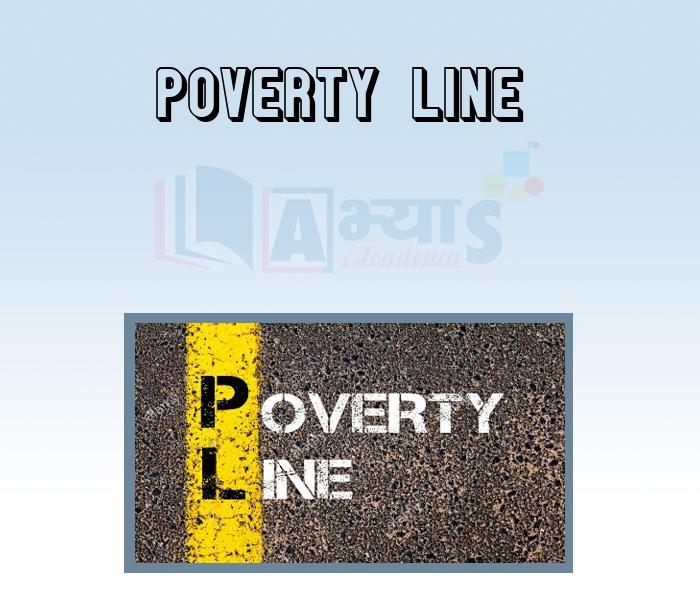Poverty Line










Poverty Line
Poverty Line:
Poverty line is an imaginary line used by any country to determine its poverty. It is considered appropriate by a country according to its existing social norms. It varies from time to time, place to place and country to country. The most common method of determining poverty is income or consumption levels i.e. people will be considered poor if their income or consumption level falls below a given ‘minimum level’ (poverty line) necessary to fulfill the basic needs.
Poverty Line Estimation in India:
In India, a subsistence level or minimum level of food requirement (as determined by its calorific value), clothing, footwear, fuel, lighting, educational and medical requirements, etc are determined for estimating the poverty line. Since in rural and urban areas, the nature of work and the prices of goods are different, the calorific requirement and expenditure per capita are also different. The money value required for buying these calorie requirements (given in the last column) in terms of foodgrains and other items is revised periodically based on rise in prices of these goods. In urban areas, the prices of essential items is higher when compared to the rural areas and so, the poverty line is higher despite having low calorific requirement per day.
Students / Parents Reviews [10]
Abhyas is a complete education Institute. Here extreme care is taken by teacher with the help of regular exam. Extra classes also conducted by the institute, if the student is weak.

Om Umang
10thIt was good as the experience because as we had come here we had been improved in a such envirnment created here.Extra is taught which is beneficial for future.

Eshan Arora
8thOne of the best institutes to develope a child interest in studies.Provides SST and English knowledge also unlike other institutes. Teachers are co operative and friendly online tests andPPT develope practical knowledge also.

Aman Kumar Shrivastava
10thMy experience was very good with Abhyas academy. I am studying here from 6th class and I am satisfied by its results in my life. I improved a lot here ahead of school syllabus.

Ayan Ghosh
8thIt has a great methodology. Students here can get analysis to their test quickly.We can learn easily through PPTs and the testing methods are good. We know that where we have to practice

Barkha Arora
10thMy experience with Abhyas is very good. I have learnt many things here like vedic maths and reasoning also. Teachers here first take our doubts and then there are assignments to verify our weak points.

Shivam Rana
7thMy experience with Abhyas academy is very good. I did not think that my every subject coming here will be so strong. The main thing is that the online tests had made me learn here more things.

Hiya Gupta
8thBeing a parent, I saw my daughter improvement in her studies by seeing a good result in all day to day compititive exam TMO, NSO, IEO etc and as well as studies. I have got a fruitful result from my daughter.

Prisha Gupta
8thIt was a good experience with Abhyas Academy. I even faced problems in starting but slowly and steadily overcomed. Especially reasoning classes helped me a lot.

Cheshta
10thA marvelous experience with Abhyas. I am glad to share that my ward has achieved more than enough at the Ambala ABHYAS centre. Years have passed on and more and more he has gained. May the centre flourish and develop day by day by the grace of God.
